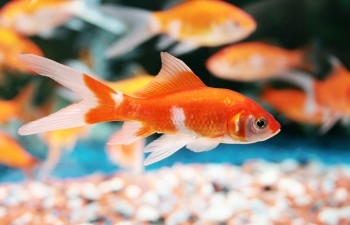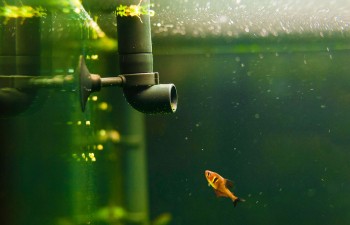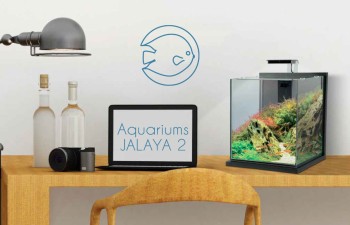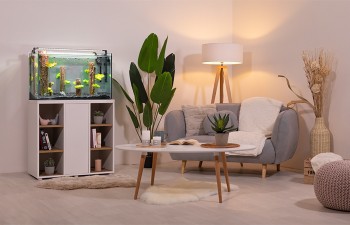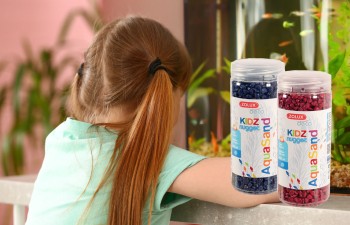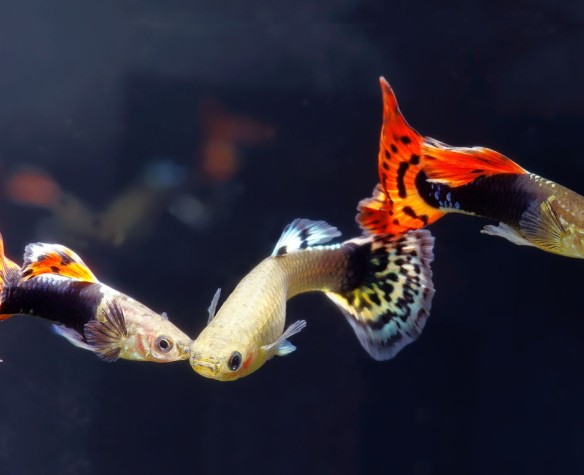
My first guppies
The guppy aquarium (hot water aquarium) is often the first tropical aquarium purchased for the home. This is a fundamental step in understanding the needs of hot water fish and your first experience of breeding. With care and some knowledge, keeping guppies proves to be relatively straightforward and can be particularly prolific. Beware of overbreeding!
History
The guppy, native to South America, is one of the most widespread species among tropical fish enthusiasts.
Originally introduced to several countries as part of a mosquito-control strategy, the species soon found itself in the aquariums of the first enthusiasts, almost a century ago.
The first records of guppies being kept as a hobby date back to 1908, to the import of several specimens by a German enthusiast from Hamburg. Its reproduction rate astounded biologists and enthusiasts at the time.
One of the main reasons for its success is the fact that it is easy to breed. Over time, this has enabled complex hybridisation between various populations and the stability of an increasing number of varieties with atypical colours and patterns.
In this context, in the same way as for cats and dogs, guppy shows with very strict assessment criteria have been held since at least 1922.
What do guppies look like?
Guppies are small fish which rarely grow to more than 4 cm. Females are larger than males, with a considerably more subdued colouration. They have a dark spot on their belly, where the eggs are incubated.
In their natural state, males are covered with small orange-yellow spots, and generally have a black dot on their side.
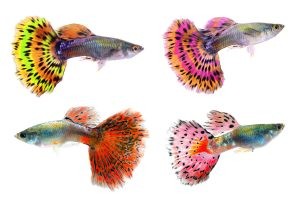
Years of selective breeding have led to the development of very colourful varieties, such as the “Cobra Guppy”, covered in spots and markings on a yellow or red background, or the “Silver Tuxedo Guppy”, with an orange tail and silver upper body.
Reproduction method
Guppies are traditionally classed as “viviparous”, and debate on their “ovoviviparity” is still ongoing. In “viviparous” fish, the larvae are connected to the mother by an umbilical cord. In guppies, the developmental process is slightly different: the eggs are released and incubated directly in the female’s abdomen, with limited nutrient exchanges. When the female releases her young, they are already at the free-swimming stage and are ready to feed independently.
Behaviour and maintenance
The male exhibits particularly overbearing behaviour towards females and spends most of his time pursuing them. To prevent females from becoming exhausted, it is advisable to keep one male with three or four females. Aside from this aspect of its nature, it is a calm fish with relatively few behavioural problems with respect to other fish. The species generally lives in vegetation and in the upper part of the aquarium.
If you would like to observe the development of young fish, the aquarium should be well-planted with moss and numerous plants, which will provide shelter for new arrivals. Predatory behaviour has been observed among guppies, but the greatest threat usually comes from fellow inhabitants.
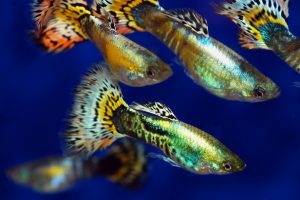
Tetras or danios will relentlessly hunt the fry, and very few will reach adulthood. Careful consideration should therefore be given to the aquarium population if enthusiasts wish to branch out into guppy breeding. Take care not to introduce very large species of fish (angelfish, etc.). If they are not used to cohabiting with smaller species from a young age, there will be a potential risk of predatory behaviour, even towards adult individuals.
Choosing your aquarium
There are two approaches to keeping guppies: specific breeding or a community aquarium. In both cases, a filtration system is necessary and 25% aquarium water volume should be changed monthly.
An aquarium with a volume of approximately sixty litres is sufficient for specific breeding. Allow two males for 6 to 8 females. The water temperature should range from 18 to 28°C. If the aquarium is kept in a room at a constant temperature of approximately twenty degrees, a heating system is not necessarily required.
For community aquarium, the needs of each species should be taken into account. For example, cohabitation with cardinals is possible, but a heating element will need to be installed (water temperature of 26°C). The aquarium volume will be larger, and will depend on the different species envisaged.
It is important to bear in mind that the main reasons for problems when keeping guppies are due to overpopulation of aquariums and unsuitable combinations of fish.
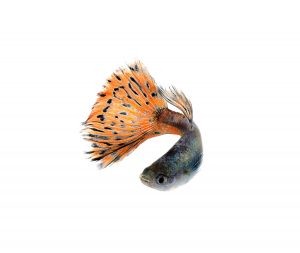
Installing your aquarium
The aquarium should be installed away from windows exposed to sunlight, to avoid invasive growth of undesirable algae. After filling with water, and adding decorations and plants, wait for three to four weeks before introducing the fish. This period is essential for completion of the nitrogen cycle (the fish will not survive if they are introduced before the end of the cycle).
Once this protocol is complete, check there are no more nitrites in the water (these tests are available in all pet stores). If the results are conclusive, the first guppies can be introduced into their new home.
Guppies are usually robust, hardy fish. They tolerate the properties of water (pH, hardness), and tap water can be used to fill the aquarium and for changing the water, providing it is not too chlorinated. Place them in the aquarium carefully. If necessary, ask your pet store for advice on how to acclimatise your fish.
Ideas for aquariums
If you would like to combine several species, here are a few ideas for your aquarium population:
“South-American Stream” – 120 litres, difficulty: beginner
The aquarium will be well-planted with different heights of plants (Anubias, Bacopa, Echinodorus, Cryptocoryne, Micranthemum, etc.) to provide the fry with as much shelter as possible.
Fish: 12 guppies/15 neon blue tetras/10 Corydoras aeneus
“Miniature Amazon” – 160 litres, difficulty: easy
The aquarium will be well-planted with bottom and surface plants to provide the fry with as much shelter as possible. A few roots will be added for decoration.
Fish: 12 guppies/a pair of Apistogramma cacatuoides/20 rummy-nose tetras/10 dwarf corydoras
“Orinoco Biotope” – 200 litres, difficulty: intermediate
The aquarium will mainly be filled with large roots. Surface plants will provide protection for young guppies.
Fish: 16 guppies/6 ram cichlids/12 Otocinclus/20 Corydoras panda
Conclusion
Guppies are one of the easiest species for embarking on the tropical fish adventure. Owing to its rapid reproduction rate, it is also the perfect species for discovering the developmental process of fish.
With its unparalleled sociability and its captivating constant activity, this little fish is an essential feature of your first tropical aquarium.
Article drawn up by our partners from the FISHIPEDIA site


